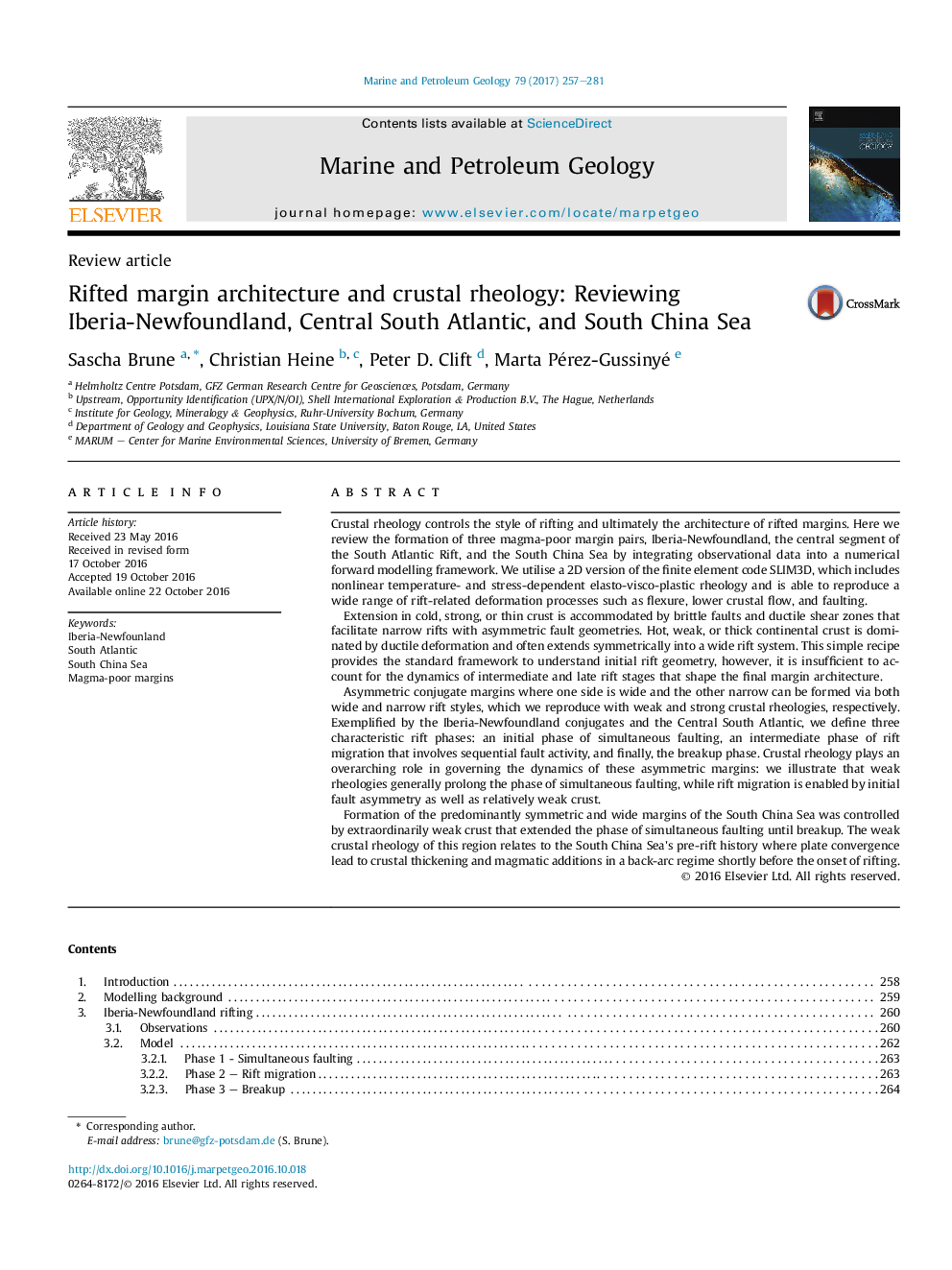| کد مقاله | کد نشریه | سال انتشار | مقاله انگلیسی | نسخه تمام متن |
|---|---|---|---|---|
| 6434319 | 1637148 | 2017 | 25 صفحه PDF | دانلود رایگان |
- We review 3 magma-poor margins combining observations and numerical modelling.
- We describe three characteristic phases: (1) simultaneous faulting, (2) rift migration, and (3) break-up.
- Weak rheologies prolong the phase of simultaneous faulting.
- The rift migration phase is enabled by initial fault asymmetry and weak crust.
Crustal rheology controls the style of rifting and ultimately the architecture of rifted margins. Here we review the formation of three magma-poor margin pairs, Iberia-Newfoundland, the central segment of the South Atlantic Rift, and the South China Sea by integrating observational data into a numerical forward modelling framework. We utilise a 2D version of the finite element code SLIM3D, which includes nonlinear temperature- and stress-dependent elasto-visco-plastic rheology and is able to reproduce a wide range of rift-related deformation processes such as flexure, lower crustal flow, and faulting.Extension in cold, strong, or thin crust is accommodated by brittle faults and ductile shear zones that facilitate narrow rifts with asymmetric fault geometries. Hot, weak, or thick continental crust is dominated by ductile deformation and often extends symmetrically into a wide rift system. This simple recipe provides the standard framework to understand initial rift geometry, however, it is insufficient to account for the dynamics of intermediate and late rift stages that shape the final margin architecture.Asymmetric conjugate margins where one side is wide and the other narrow can be formed via both wide and narrow rift styles, which we reproduce with weak and strong crustal rheologies, respectively. Exemplified by the Iberia-Newfoundland conjugates and the Central South Atlantic, we define three characteristic rift phases: an initial phase of simultaneous faulting, an intermediate phase of rift migration that involves sequential fault activity, and finally, the breakup phase. Crustal rheology plays an overarching role in governing the dynamics of these asymmetric margins: we illustrate that weak rheologies generally prolong the phase of simultaneous faulting, while rift migration is enabled by initial fault asymmetry as well as relatively weak crust.Formation of the predominantly symmetric and wide margins of the South China Sea was controlled by extraordinarily weak crust that extended the phase of simultaneous faulting until breakup. The weak crustal rheology of this region relates to the South China Sea's pre-rift history where plate convergence lead to crustal thickening and magmatic additions in a back-arc regime shortly before the onset of rifting.
380
Journal: Marine and Petroleum Geology - Volume 79, January 2017, Pages 257-281
